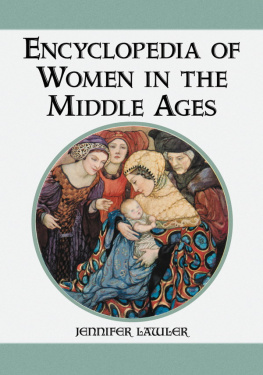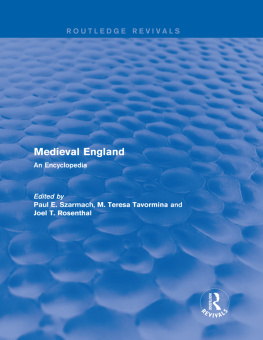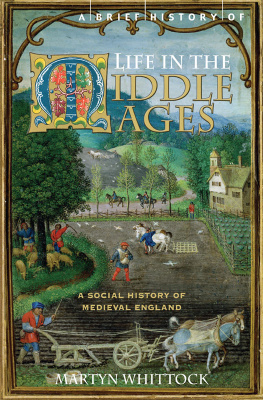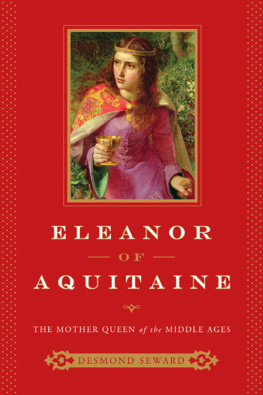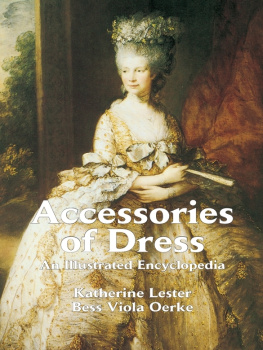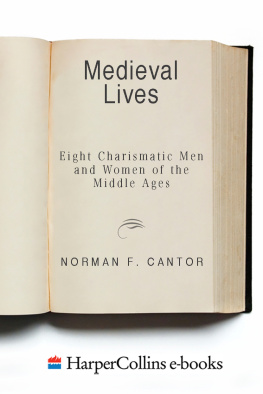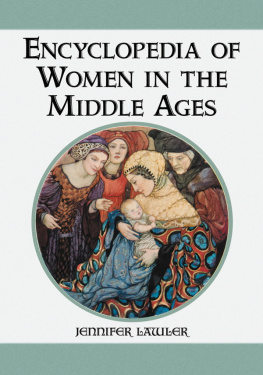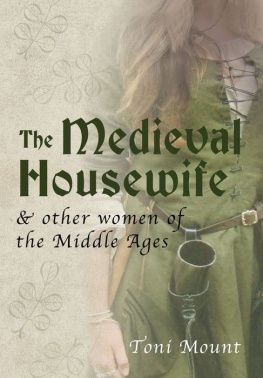
Table of Contents
Also by Jennifer Lawler
Encyclopedia of the Byzantine Empire (McFarland, 2004)
Library of Congress Cataloguing-in-Publication Data
Lawler, Jennifer, 1965
Encyclopedia of women in the Middle Ages / by Jennifer Lawler.
p. cm.
Includes bibliographical references and index.
ISBN-13: 978-0-7864-3253-0
softcover: 50# alkaline paper
1. WomenHistoryMiddle Ages, 5001500Encyclopedias.
HQ1143.L38 2008
305.4'09'02dc21 2001126809
British Library cataloguing data are available
2001 Jennifer Lawler. All rights reserved
No part of this book may be reproduced or transmitted in any form or by any means, electronic or mechanical, including photocopying or recording, or by any information storage and retrieval system, without permission in writing from the publisher.
Cover art 2008 PhotoDisc
McFarland & Company, Inc., Publishers
Box 611, Jefferson, North Carolina 28640
www.mcfarlandpub.com
This book is dedicated to Jessica,
who makes everything worthwhile.
Acknowledgments
Many thanks to Dr. Michael Cherniss for putting up with my feeble attempts at noun declension for all those years; to Dr. Richard Hardin, who introduced me to Spenser, not a medieval poet but nonetheless a very good one; to Dr. Beverly Boyd, who pointed out that no one asked Emelye; and to Dr. Douglas Atkins, who once told me I was indeed a writer. All of you made this project possible.
Preface
When I first began studying the Anglo-Saxon language (Old English), we learned vocabulary words according to their frequency of usage in Anglo-Saxon poetry. The first week, we learned man, war, blood, warrior, and mead. The second week, we learned sword, slain, grief, and, with morbid logic, revenge.
Something like twelve weeks later, we learned woman. Apparently, early medieval poets didnt have much to say about women.
You could look at the entire history of the Middle Agesincluding the work of modern historiansand come away with the impression that there were three women in medieval Europe: Eleanor of Aquitaine, Joan of Arc, and the ghost of the Virgin Mary.
In the mid1980s, more and more academics and other writers began investigating and reporting about womens lives in the Middle Ages. But there still was not a general guide, an encyclopedia, focusing on medieval women. Because of this lack, I have produced this Encyclopedia of Women in the Middle Ages.
In this book, I have included a brief introduction that describes the world in which medieval women lived, an A to Z reference to medieval women and the various aspects of their lives, a glossary that defines general terms that a reader may need to know, and a bibliography that includes suggestions for obtaining additional information in a variety of subject areas.
The Encyclopedia of Women in the Middle Ages is intended for use by general readers interested in the Middle Ages, by history students learning about the Middle Ages, and by others interested in understanding more about the history of womens lives. May this book inspire you to seek further information about women in the Middle Ages.
Jennifer Lawler
Summer, 2001
Lawrence, Kansas
Note about Language, Transliteration, and Names
In the Middle Ages, the historical period from about ad 500 to about 1500, few people had last names. Sometimes, but not always, nobles had and used a family name. Most people were known by their first names. They were further identified by their job, their place of birth, or a personal trait. Sometimes a persons relationship to another person was used, such as Wills son (eventually, Wilson). Even many villages went unnamed.
Given names were part of a family tradition and were an inheritance, so many families had several members with the same name or slight variations of it. When consulting primary sources, this multitude of similar-sounding people can make it difficult to know to which person the reference attaches. This is especially true in the early Middle Ages. It can be difficult and even impossible to trace ancestry.
Further, it was not uncommon for women to change their given names upon marrying. This happened most often when a noble woman married a foreigner and went to live in a foreign land. For instance, Edith, upon her marriage, became Queen Matilda of Scotland.
In the later Middle Ages, around the twelfth century, when individual identity was becoming more and more important, people took their last names from their lord or from their occupation. The use of last names was by no means widespread until after the end of the Middle Ages. Last names then became inherited, except in Scandinavia and Eastern Europe, where surnamespatronymicswere not fixed.
The fact that women were often referred to as the bishops sister or the merchants daughter rather than by their given names increases the difficulty of learning about women in the Middle Ages. Even in modern histories of the period, writers, infuriatingly, continue to refer to women this way, without giving a name. Further, primary documents about women are difficult to find, since they had few legal rights and do not appear in chronicles focusing on wars and kings. Therefore, as thorough as one may attempt to be, many interesting women have, perforce, been overlooked.
To add to the confusion about names, there is a tendency for medieval historians to translate foreign names into the vernacular. Thus, in France, the legendary saint is known as Jeanne dArc, while in England, she is called Joan of Arc. Eirene, a spelling commonly used in the Byzantine Empire, becomes Irene when Europeans write about her. Zo becomes the rather less obvious Sophia. Also, vernacular names have been Latinized. The Anglo-Saxon Chrotichildis becomes Clotilda when scribes writing in Latin refer to her.
Further, because of language evolution, names have come to be spelled differently. Bardas can also be read, perfectly logically, as Vardas. Thus, historians have used both spellings. In addition, spelling was not standardized in the Middle Ages. A person might even spell her own name differently when writing it on different documents. Therefore, there are references to Suabia and Swabia, Adrian and Hadrian, and other such examples abound. In this work, all women are listed by their most commonly used first names.
Different languages use different alphabets. Transliteration creates problems, as names spelled one way using the Cyrillic alphabet or the Arabic alphabet may reasonably be spelled three or four different ways using the Latin alphabet. Thus, Mohammad, Muhammad, Mahmud, Mahmet, and Muhammed have all at one time or another been used to identify the prophet of Islam.
In this book, the spelling most frequently encountered in sources has been used. Extensive cross-references have been included in order to reduce any possible confusion, but it is always wise to check alternate spellings before assuming that a specific woman is not listed.
For most of the women in this book, information on family lineage can be found in the appendix of genealogical charts.
Introduction
There are special problems in writing about women in history and particularly women in the Middle Ages. The sources we have are more interested in the male-oriented spheres and in the lives of the nobility than in women and non-nobles. Even many modern historians focus on warfare and royal reigns. Although we do know a great deal about how certain noblewomen lived, we know a great deal less about non-noble womenthe vast majority of women who lived in the Middle Ages. But some general conclusions can be reached.
Next page
